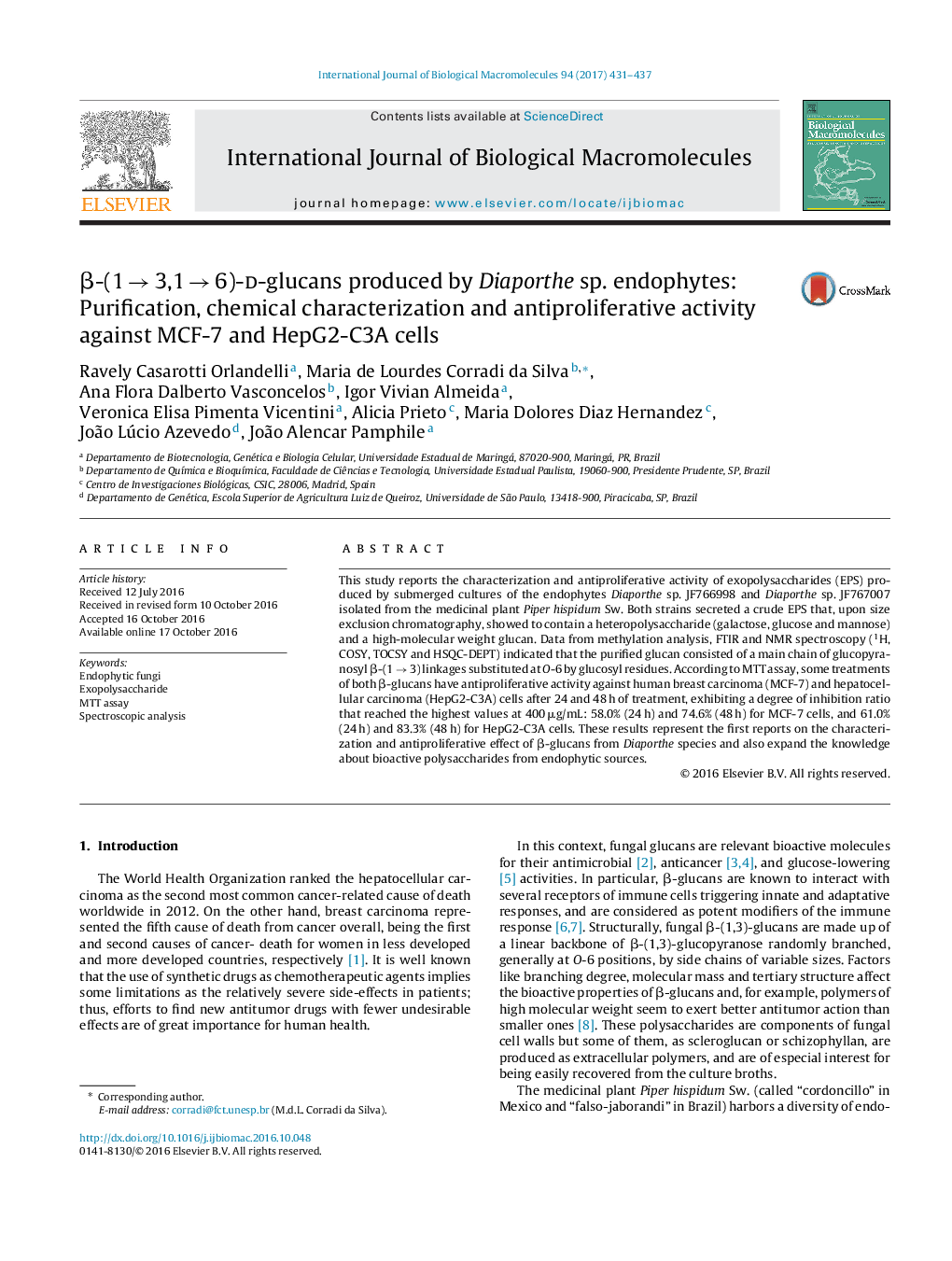| Article ID | Journal | Published Year | Pages | File Type |
|---|---|---|---|---|
| 5512516 | International Journal of Biological Macromolecules | 2017 | 7 Pages |
â¢Î²-glucans (EPS-P) were purified from the fermentation broth of two Diaporthe endophytes.â¢Î²-glucans consisted of a main chain of glucopyranosyl (1 â 3) linkages substituted at O-6 by glucosyl residues.â¢EPS-PD2 inhibited up to â¼75% of the proliferation of MCF-7 cells.â¢Both glucans inhibited up to â¼84% of the proliferation of HepG2-C3A cells.
This study reports the characterization and antiproliferative activity of exopolysaccharides (EPS) produced by submerged cultures of the endophytes Diaporthe sp. JF766998 and Diaporthe sp. JF767007 isolated from the medicinal plant Piper hispidum Sw. Both strains secreted a crude EPS that, upon size exclusion chromatography, showed to contain a heteropolysaccharide (galactose, glucose and mannose) and a high-molecular weight glucan. Data from methylation analysis, FTIR and NMR spectroscopy (1H, COSY, TOCSY and HSQC-DEPT) indicated that the purified glucan consisted of a main chain of glucopyranosyl β-(1 â 3) linkages substituted at O-6 by glucosyl residues. According to MTT assay, some treatments of both β-glucans have antiproliferative activity against human breast carcinoma (MCF-7) and hepatocellular carcinoma (HepG2-C3A) cells after 24 and 48 h of treatment, exhibiting a degree of inhibition ratio that reached the highest values at 400 μg/mL: 58.0% (24 h) and 74.6% (48 h) for MCF-7 cells, and 61.0% (24 h) and 83.3% (48 h) for HepG2-C3A cells. These results represent the first reports on the characterization and antiproliferative effect of β-glucans from Diaporthe species and also expand the knowledge about bioactive polysaccharides from endophytic sources.
Graphical abstractDownload high-res image (197KB)Download full-size image
